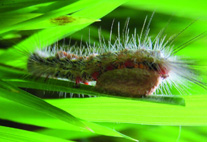Abstract
With phylogenetic knowledge of Lepidoptera rapidly increasing, catalysed by increasingly powerful molecular techniques, the demand for fossil calibration points to estimate an evolutionary timeframe for the order is becoming an increasingly pressing issue. The family Nepticulidae is a species rich, basal branch within the phylogeny of the Lepidoptera, characterized by larval leaf-mining habits, and thereby represents a potentially important lineage whose evolutionary history can be established more thoroughly with the potential use of fossil calibration points. Using our experience with extant global Nepticulidae, we discuss a list of characters that may be used to assign fossil leaf mines to Nepticulidae, and suggest useful methods for classifying relevant fossil material. We present a checklist of 79 records of Nepticulidae representing adult and leaf-mine fossils mentioned in literature, often with multiple exemplars constituting a single record. We provide our interpretation of these fossils. Two species now are included in the collective generic name Stigmellites: Stigmellites resupinata (Krassilov, 2008) comb. nov. (from Ophiheliconoma) and Stigmellites almeidae (Martins-Neto, 1989) comb. nov. (from Nepticula). Eleven records are for the first time attributed to Nepticulidae. After discarding several dubious records, including one possibly placing the family at a latest Jurassic position, we conclude that the oldest fossils likely attributable to Nepticulidae are several exemplars representing a variety of species from the Dakota Formation (USA). The relevant strata containing these earliest fossils are now dated at 102 Ma (million years ago) in age, corresponding to the latest Albian Stage of the Early Cretaceous. Integration of all records in the checklist shows that a continuous presence of nepticulid-like leaf mines preserved as compression–impression fossils and by amber entombment of adults have a fossil record extending to the latest Early Cretaceous.

